“In the history of capitalism, this is the hardest time ever to invest. People are going broke, losing their jobs, and fear more than greed rules the news and tries to rule thoughts.”
I got an email recently with the subject line “The Ultimate Cheat Sheet For Investing All Of Your Money”. It was from James Altucher, a writer and interviewer who often manages to bring fresh perspectives to interesting topics.
And he’s right. People are scared. I know some of them.
James gives some common sense advice on investing, but he’s humble enough to start off saying that you shouldn’t listen to anyone at all about investing… “This is your hard-earned money. Don’t blow it by listening to an idiot like me.”
I’ve summarised his advice below, and then I give you my take on why you shouldn’t follow his advice. I think there’s a better way to invest, a way that does not involve risking your money on the stock market (or any financial market for that matter).
But first let’s start with James’ advice. What does James know about investing?
Well, he has lost all of his money in 2001 and 2002 through bad investing, and several times after that. He has run a hedge fund that was successful. He even ran a fund of hedge funds, which means he’s “probably analyzed the track records and strategies of about 1000 different hedge funds.” He has “tried every investing strategy out there” and written trading software and several books on investing.
But if there’s ONE thing he has learned, it’s this:
“ALL OF WALL STREET IS A SCAM. There are zero exceptions.” – James Altucher
With that lesson in mind, here’s James’s advice:
- Never daytrade. Don’t even think about it.
- Invest no more than 3% of your portfolio in any one stock (but if the stock grows past 3% you can keep it)
- Invest no more than 30% of your portfolio in stocks
- Pick some stocks and hold them forever (Warren Buffet style). An advice from Warren Buffet is this: “if you think a company will be around 20 years from now then it is probably a good buy right now.” As James says though, “it’s almost impossible to pick the right ones”.
- Never invest based on what you read in the news
- Never invest in a private company unless 1) the CEO has started and sold a business before, 2) the business is a sector with a strong demographic headwind behind it, 3) the company has revenues and / or profits, 4) you’re getting a really good deal.
- What about bitcoin? James thinks it has about 1% change of being a survivor, so he has 1% of his portfolio in bitcoin.
- If you’re going to invest in precious metals, wait until the gold/silver ratio gets higher than it’s historical average and buy silver.
- Avoid mutual funds. In his words, “Mutual funds, and the bank representatives that push them, consistently lie about the fees they are charging.”
- Don’t buy a house as an investment, because in his eyes it’s a horrible investment. (He has some good points, but I couldn’t disagree more on this one. I’ll tell you why below)
- Cash is king. Don’t be in a rush to put all of your money to work. As he says, “you can sleep at night knowing there is cash in the bank.”
- Invest in yourself. Start a business. Invest in experiences instead of possessions. Invest in lots of books, and take the time to read them.
Now what do I know about investing?
Not more than James for sure, and I’m just as much of an idiot as he is in trying to give any financial advice (If I do give you financial advice, don’t listen to me because you’ll probably lose all of your money).
I’m not a total newbie however. I was probably not more than 10 or 12 when I forced my dad to buy my first stocks (which I then held for almost a decade before I sold at a very nice profit). Since then I’ve lost and gained quite a bit of money in the stock market. But now it’s probably 6 years or more since I last owned a stock.
The last real “financial investment” I made was in bitcoins. I bought a bunch when it was at $30. Now it’s at around $240. Then I lost a bunch when Mt Gox, the then biggest market exchange for bitcoin, declared bankruptcy after bitcoins worth over $450 million went missing.
Today, I don’t “invest” in the traditional sense. It causes me more anxiety than it’s worth.
Instead I’ve bought land, and every single dollar I can muster is invested into turning this land into an intergenerational, resilient asset that will not only produce food and some income for myself but also for future generations (that I hope will want to inherit the place).
And it’s this kind of investing I’d like to explore today.
A better way to invest your money
You know why I don’t like “investing”? Because when you invest money in the stock market you give up control over your hard-earned money. You effectively say to yourself that someone else can do a better job at handling your money than you can. And often they fail, resulting in you losing money.
Then there’s also the fact that when you invest in the Fortune 500’s you’re actually feeding into the very system that is contributing to many of the problem’s we’re facing today as a species. Big Ag, Big Banking, Big Commerce. When you invest in these companies you’re giving them the energy they depend on to grow even more, further increasing their power over how we live.
I’d like to propose some other investments you can make. Investments that make sense no matter what happens to the stock market or to the US dollar. Investments that not only will keep their value when the economy crashes, but increase in value.
I call these resilient investments, or simply investing in self-reliance.
8 Resilient Investments That Are Better Than Stocks
These resilient investments run along the same lines as what I outlined in How To Hedge Your Retirement, and they’re all about going from being a consumer to being a producer.
Here they are:
Invest in a food buffer
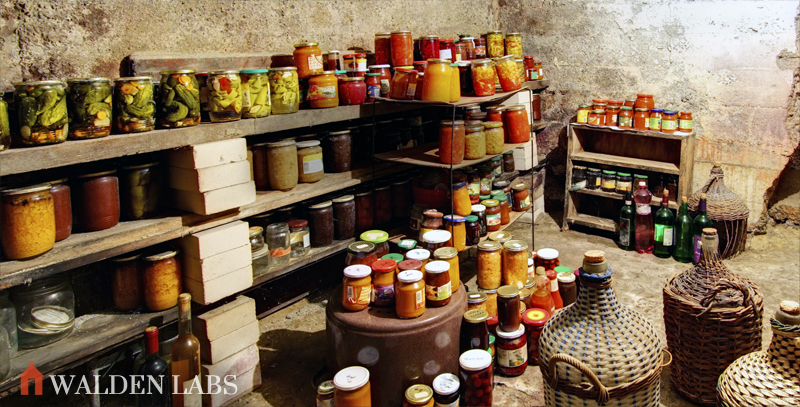
Better one canned jar in the pantry than one hundred in the supermarket!
Here’s why you need a food buffer. I can sum it up by saying this: if something disrupts the delivery of food to supermarkets it will take less than a week (sometimes less than 24 hours) before the supermarket shelves stand empty. At the same time, it’s a fact that most people don’t have enough food to last them more than two weeks at most. Many don’t have enough food at home to last them even a few days. To put it bluntly, in a crisis they would be seriously screwed.
What I mean by investing in a food buffer is to stock up on enough food, water and other essentials to get you through any short term shortage or disruption. You should have enough non-perishable food to last you at least a month. That’s a bare minimum you should aim for right away.
You’d be surprised how much food you can get for a hundred bucks when you buy in bulk, but if you’re tight on cash then build it up over time starting next time you go to the supermarket. Instead of buying one package of pasta, buy two and add one to the storage. Repeat.
As I say here, “The most important advice I can give you here is to store what you eat and eat what you store. Because when you do that, you can rotate the food you have in storage so that it never goes bad.”
Don’t invest a cent in stocks before you have a three month food buffer.
Invest in fertile land
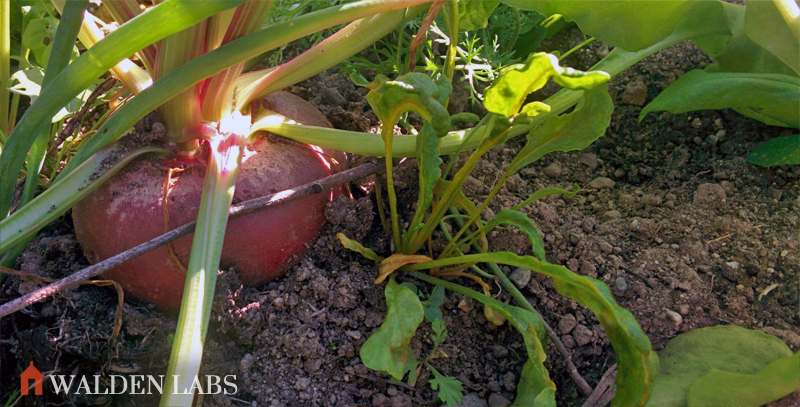
Beetroot growing in my kitchen garden
Few investments are as inflation-proof and crash-proof as high quality land that can produce an abundance of food. No matter what, land will always have value because human beings will always need to eat.
And who cares about inflation anyway when you get most of what you need to survive from your own garden?
Good land is a no brainer investment. As my former boss and mentor Simon Black over at Sovereign Man says…
Bottom line: Supply is decreasing. Demand is increasing. And idiotic policy is making it all worse. The absolute BEST that we can hope for is rising food prices. The worst case is food shortages.
Now, remember James Altucher told you to never buy a house as an investment? Here’s where I disagree with him.
Yes he’s correct that most houses are horrible investments that will do nothing more than cost you money and time for the rest of your life. But a home, or homestead, on the other hand can be your greatest asset when you go from being a consumer to being a self-reliant producer.
As we’ve written previously, “over the vast majority of our history as civilized beings, our homes and our communities derived their value from how much food and energy they could produce.
That changed only recently (by historical standards) as we became increasingly dependent on the global economic system. Due to this dependence, our homes became hollow decorative assets, devoid of any productive capacity. Our communities became black holes of consumption.
The way out of the trap of sinking valuations is to make our homes and communities productive assets again. An asset that can produce food, energy, water, and products. An asset that feeds us, warms us, and provides for us. An asset that can, in a pinch, generate us income.
A home like that has intrinsic value. It has value regardless of what happens in the region, the nation, or the world.”
Plant a fruit tree, or lots of them
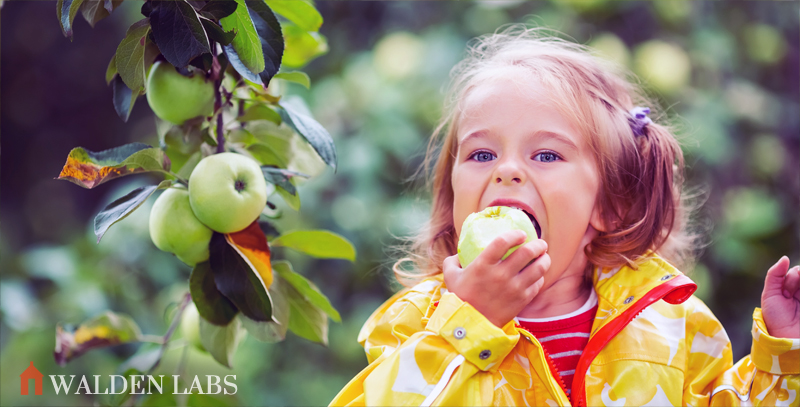
You’re planting the trees not only for yourself but also for your kids, and their kids, and so on
Once you have land, there are so many things you can do to increase the value and resiliency of your land for generations to come.
One of these things is to plant fruit and nut trees. Trees require very little maintenance and still allow you to grow other crops under and around them.
All they require to produce an abundance of food is water, sunshine and some fertilizer (which you can also produce 100% natural on site).
To give you an example of why I’m a big proponent of natural and real assets like fruit trees here’s something that Simon Black wrote after an discussion of ours on the topic back in 2014, while visiting his beautiful farm in Chile (where you’ll find a lot of fruit trees).
If you had invested $85 in the Google IPO back in 2004, your investment would be worth over $1,100 today… a 13x return.
…
The average plum tree can easily produce over 100 pounds of fruit, starting a few years after you put a well-developed seedling in the ground.
And even on a standard-sized residential lot, you can plant 20+ fruit trees.
Assuming a long-term average price of just $0.50 per pound and a 2004 plant price of $4, investing $85 in plum trees 10-years ago instead of Google stock would have yielded well over $6,000 so far.
Even if you’re not a Do-it-yourselfer and allow for harvest costs, loss, pruning, water, and other expenses, you’d still be up more than GOOG. Plus you’d still be grossing $1,000 per year… not to mention the increase in your home’s market value.
More importantly, you would be owning (and producing) REAL assets instead of paper assets– something that can be traded, sold, stored, or if need be, eaten.
And best of all, you wouldn’t have had Ben Bernanke and his central banking ilk as your silent partner for the past decade, manipulating stock prices and causing asset bubbles.
Now, Simon approaches fruit trees from a very entrepreneurial perspective, but he often says that even if the whole world economy and stock market goes down the drain he’ll always “still be able to go outside and pick fresh plums off the trees”.
Try doing that with stocks.
Invest in energy production
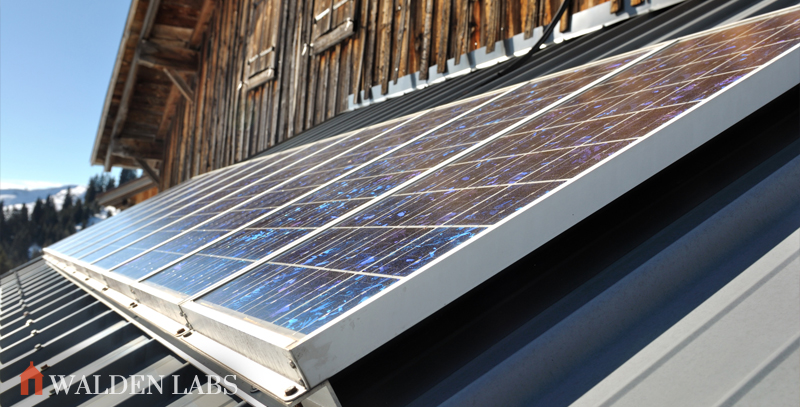
Become an energy producer and disconnect from Big Energy.
There are so many reasons for why it makes sense to become an energy producer.
The cost of solar panels is dropping exponentially and if it continues at the same rate solar electricity might just get really cheap.
Still today, you can start saving money on your electricity bill literally the first day you install the system. As Google wrote when launching Project Sunroof, “A typical solar home can save hundreds or even thousands of dollars per year on their electricity bill”.
Here’s Project Sunroof:
Then there’s the resilience aspect. When you produce your own power in this decentralized manner you’re not dependent on aging and fragile energy grids that have countless possible points of failure.
While it’s easy to put a price on the savings you’ll get with solar, it’s harder to put a price on resilience. To me, it’s worth quite a bit.
Invest in rainwater harvesting (and a good water filter)
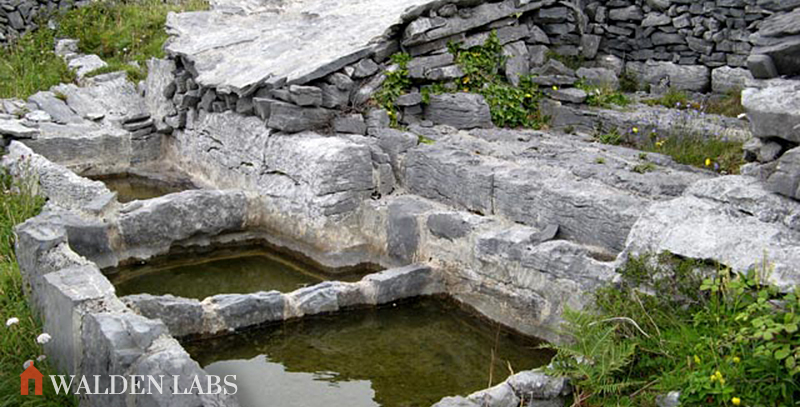
An old rainwater harvesting system on the Aran Islands in Ireland, built to overcome the shortage of surface water on the limestone plateau. Photo: Jonathan Wilkins. CC BY-SA
Most people reading this are likely used to on-demand water from the tap. You turn it on and just expect clean water to flow out as if it’s the most natural thing in the world.
The reality is that we take a lot for granted, water included. Case in point, just the other day I woke up and went to the kitchen and turned on the tap.
No water came.
I turned it on and off two more times to make sure I didn’t just imagine it. Still no water.
Turned out they were searching for a water leak in my area so they had to shut the water on and off sporadically for two days.
This did not affect me because I’ve made sure we have a backup storage of water to last us through any short term disruption. Plus we’ve got a well up in the woods that provides water for irrigation (although it was the main water source of the house before the 60’s).
I’m sure this disruption caused some minor discomfort to some of my neighbors, but it lasted mere hours. What if it had lasted days, weeks or even months or years due to some once-in-a-century catastrophe? Take a major natural disaster or a war for example. Those can seriously mess up water infrastructure.
And especially when you’re growing a lot of your own food, you better make sure you have the water to irrigate with because you don’t want to see a three-week dry spell destroy your whole annual crop or, even worse, the fruit trees you planted five years ago that have just started bearing fruit.
The bottom line is, if you own land then rainwater harvesting is a no-brainer. Collect the water that falls on your property and maximise the usage of that rainwater. The most obvious place to start is to harvest the rainwater that falls on your roof. It can be as simple as leading the rainwater from your gutters into a barrel, or into a larger storage tank or cistern.
And as I write in this rainwater harvesting guide you can catch a lot of water from a roof.
The roof of a 1,000-square-foot house can collect around 600 gallons per one inch of rain – that’s enough free water to fill more than 15 bathtubs!
Just make sure it’s legal to harvest rainwater in your area (check local or state laws). In a few places in the world, such as Colorado (and I bet North Korea), the politicians in charge believe they’re magically entitled to the water that falls on your property. If you ask me that’s a clear violation of the natural rights of man, but you might still want to check the law if you want to avoid the risk of fines and / or jail time.
For true water resilience you need a water filter
Now, in case you turn on the tap and no water comes you might be forced to start drinking the rainwater you’ve collected. To do that safely, you need a water filter.
One of the most popular gravity filters out there is the Big Berkey filter system (Self-Reliance 365 members see the Members Discounts for a code to get a free Sports Berkey Water Bottle Filter from Directive21 worth $25 when you buy the Big Berkey.).
The Big Berkey removes pathogenic bacteria, cysts and parasites entirely and extracts harmful chemicals such as herbicides, pesticides, VOCs, organic solvents, radon 222 and trihalomethanes. It also reduces nitrates, nitrites and unhealthy minerals such as lead and mercury.
At less than $300, a water filter of this caliber is one of the best investments you can make in the health and resilience of your family (the Katadyn Pocket is also an excellent choice for the more mobile person).
Invest in your personal safety
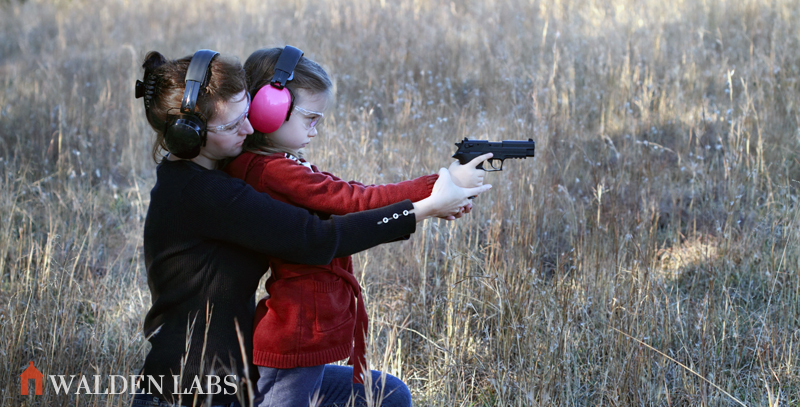
A gun is the ultimate equalizer, and gives man and woman, young and old the ability to protect themselves against anyone regardless of their physical strength
With increased economic turmoil and unemployment comes social unrest and soaring crime rates. Couple that with the fact that in the vast majority of cases police can’t actually protect you from becoming the victim of violent crime, and it becomes clear that the only way to ensure your safety is to take charge of it yourself.
In most cases Police can only swoop in after a violent crime has happened to clean up the mess and try to catch the bad guy. I bet you don’t want to be the mess they clean up, which is why I highly recommend you invest in your personal safety.
Don’t get lulled into this false sense of security that the police has got your back. Sure they might come to your aid, but they might come 10 minutes after it’s too late.
What does “Invest in your personal safety” really mean?
- Invest in a gun, and learn how to use it. If you live in a country where your right to protect yourself still hasn’t been taken away from you by politicians, I recommend you exercise that right and get good at it (I’m talking first and foremost to you Americans now).I can’t stress enough the importance of learning how to handle a gun safely, and how to actually hit what you aim at. If you’ve never handled a gun, take a beginners class at a shooting range. They can probably also help you choose the right gun for your needs.
In Sweden where I live, you can’t own a gun for self-defence. Sure I can get a hunting license for a rifle, but if I use it for self-defence I’d be thrown in jail. You can’t even own a crossbow in Sweden unless you compete professionally, but that ban on crossbows might trace back to the 1500’s when the crossbow was the weapon of choice of poor farmers who revolted against the oppressive king Gustav Vasa. The king and his henchmen hated it because anyone, even an amateur farmer or even a woman, could defend themselves against armored knights effectively.
It’s so bad in Sweden that just yesterday I saw a police who recently made a statement recommending people in an unsafe area “to arm yourself with a club”. People can’t protect themselves. No wonder they feel scared and helpless.
Bottom line though, if it’s within your legal rights go invest in a gun and learn how to use it safely. Unlike stocks or bonds, a gun could very well save your life.
- Invest in a good first aid kit for your home and your car, and learn how to put it to use in an emergency. I don’t know about you, but I have a hard time putting a price on my life. Even if you had to use the first aid kit a single time during your entire life, the return of investment on that purchase is unmeasurable. You can find a decent first aid kit for $30 bucks, so there’s seriously no reason not to buy one, or two.
- Take care of your body and soul. Exercise, eat healthy food, don’t work too much, get enough sleep every night, love and be loved. Every hour you invest in your physical and mental health now will pay itself back many times when you most need it.
Invest in yourself
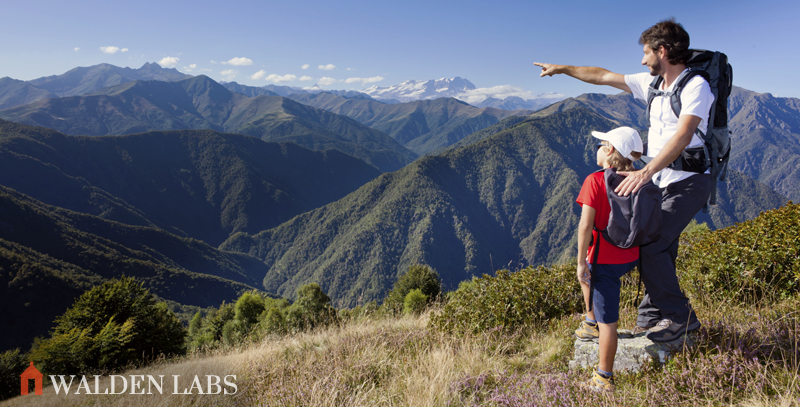
Investments in yourself can never be taken away from you.
What does that mean, “invest in myself?” Here’s what James Altucher means with that:
- “It costs almost nothing to start a business. Find something people want and start posting information about it on a blog and then upsell your services on the blog. Or write 1000 small books about different topics and publish them on Amazon. You can do this on the side while you learn and have a full time job and then when you are ready, you can jump to your other passive streams of income. I have a podcast coming up soon with a guy who makes $25,000 a month doing this. Note: It takes a lot of work to find “passive” income but when it happens, it’s worth it. These are some ideas. There are many others.”
- “Invest in experiences rather than possessions. Figure out interesting and unique experiences you can have or places you can go to (but they don’t always have to be places). Experiences pay much higher dividends than an extra TV or a nicer car.”
- “Books. Reading is the best return on investment. You have to live your entire life in order to know one life. But with reading you can know 1000s of people’s lives for almost no cost. What a great return!”
And here’s one from me:
- Skills. Money you invest in stocks can be lost, but time and money invested in learning skills can never be lost. Learn how to grow food, save seeds, can / pickle / dehydrate / ferment your produce, plant, prune and propagate trees and bushes, purify water, perform CPR, clean a wound, shoot a gun safely and accurately, generate your own power and heat, navigate using the stars as your compass, educate your kids, and more. I could give you dozens upon dozens of examples, but you get the picture. You’ll find more examples in The Self-Reliance Matrix.
Invest in your community
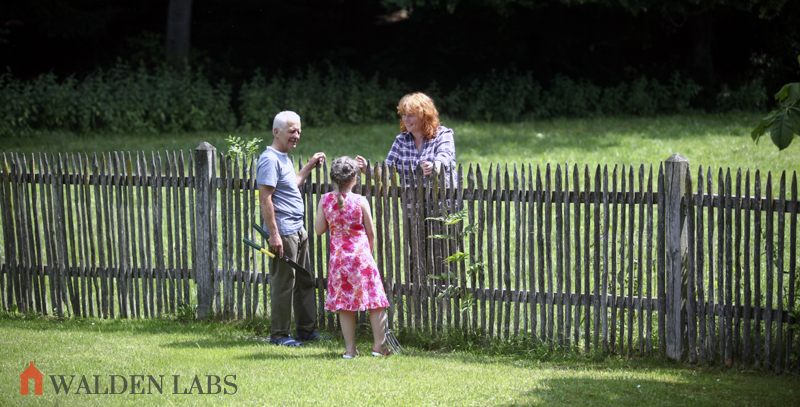
Investing in your community doesn’t cost you a cent, but you’ll reap the benefits for life.
Our government and our economic system is predicated on making us ever more estranged from our families and neighbors. Neighbors who don’t talk to each other, and in many cases don’t even know the names of the people living next door.
What they don’t tell us is that this atomized existence comes at a dire cost: complete and utter dependence on remote global systems. Systems that are now starting to break down, fail, and (in an increasing number of cases) crush us. Instead of neighbors helping each other out, they depend on the government for help.
So, it’s little wonder we don’t know much about what it takes to build a functional and thriving community. We simply have never lived in one.
So what does it take to build a resilient community? It’s all about TRUST.
And I believe a good way to build trust is to simply start talking with each other. Reach out and offer to lend a hand. And here’s my favorite that I’ve found people appreciate (and reciprocate); bring gifts. For me it’s easy. With the abundance of food and fresh eggs we produce it’s easy to make someones day with a basked of produce and still have more than enough to fill our bellies.
A resilient community scales down human relationships to a level where we we can build trust.
It’s an environment where we can expect trustworthy behavior from others in return for our own.
And it’s an investment well worth my time.
The bottom line on resilient investing
The common denominator is that all of these investments make sense no matter what happens.
Even if the politicians and the big banks can kick the can down the road and keep the circus running for many more years you’ll still be better off for making these investments today.
And if everything goes to hell, you’ll be very glad you invested in self-reliance instead of in stocks.
To wrap up, here’s a fitting poem by John Godfrey Saxe:


